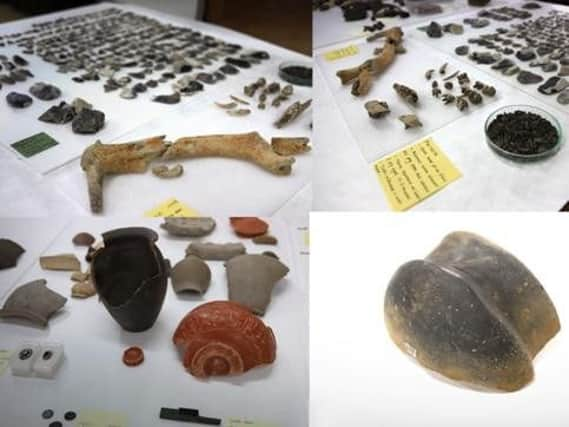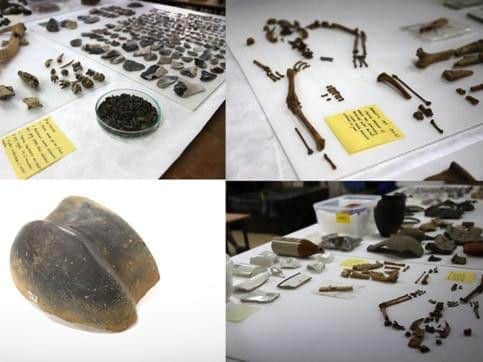Artefacts from 3,500BC found in Chichester sewage dig


Archaeology South-East dug up the items in excavations taking place ahead of the construction of a major new wastewater main.
The findings follow on from other artefacts being discovered in areas surrounding the city last year.
Advertisement
Hide AdAdvertisement
Hide AdProject manager at Archaeology South-East, Jim Stevenson said: "Southern Water's new water main scheme presented a unique opportunity to investigate what was essentially a 10km long transect across the hinterland of Chichester, enabling archaeologists to gain a keyhole-like view of patterns of human settlement and industry splanning late prehistory to the present day.


"This selection of finds are just a few of the many (nearly a metric tonne in all) that were found during the excavations. The represent many time periods and artefact types and showcase some of the interesting artefacts uncovered during these fascinating digs."
Some of the recent finds include Neolithic material (3,500 — 2,500BC), including an antler pick, waste from flint knapping and from meals and charred plant material.
Advertisement
Hide AdAdvertisement
Hide AdLots of pottery fragments have also come from the sites, representing a wide range of periods and spanning nearly six thousand years from the Early Middle Neolithic to the Second World War.
Some of the most notable vessels shown in the pictures are a small group of Middle Neolithic (3300-2800BC) sherds, a group of Middle Bronze Age (c1500-1150BC) cremation urns and an Early Iron Age (c. 600-400BC) domestic assemblage. Huge deposits of Roman pottery were also found.
The antler pick would have been used as a digging tool and was found on the base of a large ring ditch monument. Flint knapping would have been a common activity in the Neolithic, with the material used to make tools for hunting, food preparation and leatherworking for example.
Advertisement
Hide AdAdvertisement
Hide AdMr Stevenson added: "In the same pit as the flint knapping waste was found there was also remains of food, including at least two pigs aged 14-21 months - a fascinating glimpse into the everyday life of people living 5,000 years ago."
Southern Water project manager David Winterburn said: "These archaeological finds are absolutely fascinating and it's unsurprising really given the history of Chichester.
"Excavations and surveying work often play a big part of our capital schemes where investing to upgrade or improve the water network in any given area."
From the later periods, archaeologists found a large group of medieval pottery and even a group of pottery used before and during the Second World War, including many items bearing RAF stamps.